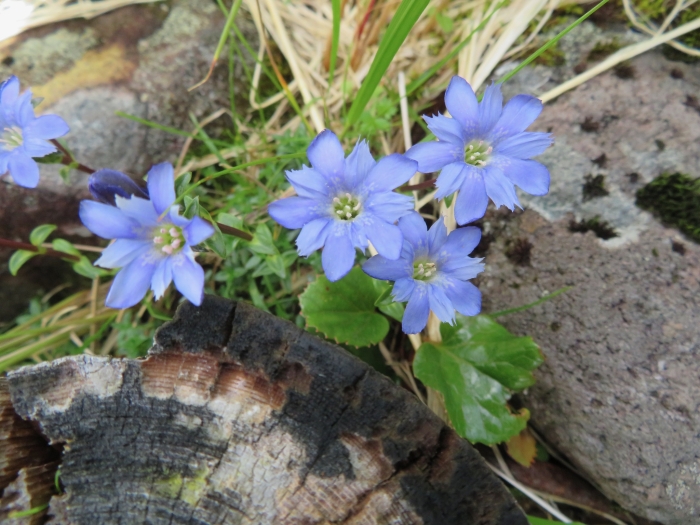Nippon Gentian
(Gentiana nipponica)
Nippon Gentian (Gentiana nipponica)
/
/

© belvedere04
CC BY 4.0
Image By:
© belvedere04
Recorded By:
Copyright:
CC BY 4.0
Copyright Notice:
Photo by: © belvedere04 | License Type: CC BY 4.0 | License URL: http://creativecommons.org/licenses/by/4.0/ | Uploader: belvedere04 | Publisher: iNaturalist |

































Estimated Native Range
Summary
Gentiana nipponica, commonly known as Nippon Gentian or Japanese Gentian, is a perennial herb native to the mountainous regions of Japan, particularly in alpine meadows and grasslands. It is a slow-growing plant that typically reaches a height of 0.5-1.5 feet (0.15-0.5 meters) and a width of 0.5-1 feet (0.2-0.3 meters). The Nippon Gentian is characterized by its upright form and striking, trumpet-shaped, deep blue flowers that bloom in the summer and fall, adding a vibrant splash of color to the garden. The flowers are showy, attracting pollinators and garden admirers alike.
This plant is valued for its ornamental flowers and its ability to thrive in cooler, temperate climates. It is often used in rock gardens, borders, and as part of naturalistic plantings. In cultivation, it requires consistent moisture and does best in full sun to part shade. It prefers well-drained, humus-rich loam or clay soils with a neutral to slightly acidic pH. While generally low-maintenance, it can be susceptible to root rot if overwatered or planted in poorly draining soils. Gentiana nipponica is not known for aggressive roots or significant disease issues, making it a reliable choice for many garden settings. It is not typically invasive when grown outside its native range, but as with all non-native plants, gardeners should monitor its growth and spread.CC BY-SA 4.0
This plant is valued for its ornamental flowers and its ability to thrive in cooler, temperate climates. It is often used in rock gardens, borders, and as part of naturalistic plantings. In cultivation, it requires consistent moisture and does best in full sun to part shade. It prefers well-drained, humus-rich loam or clay soils with a neutral to slightly acidic pH. While generally low-maintenance, it can be susceptible to root rot if overwatered or planted in poorly draining soils. Gentiana nipponica is not known for aggressive roots or significant disease issues, making it a reliable choice for many garden settings. It is not typically invasive when grown outside its native range, but as with all non-native plants, gardeners should monitor its growth and spread.CC BY-SA 4.0
Plant Description
- Plant Type: Herb
- Height: 0.5-1.5 feet
- Width: 0.5-1 feet
- Growth Rate: Slow
- Flower Color: Blue
- Flowering Season: Summer, Fall
- Leaf Retention: Deciduous
Growth Requirements
- Sun: Full Sun, Part Shade
- Water: Medium
- Drainage: Medium
Common Uses
Border Plant, Low Maintenance, Rock Garden
Natural Habitat
Native to alpine meadows and grasslands in the mountainous regions of Japan
Other Names
Common Names: Japanese Gentian
Scientific Names: , Gentiana nipponica, Ciminalis nipponica, Gentiana makinoi, Gentiana nipponica var. robusta, Varasia nipponica,
GBIF Accepted Name: